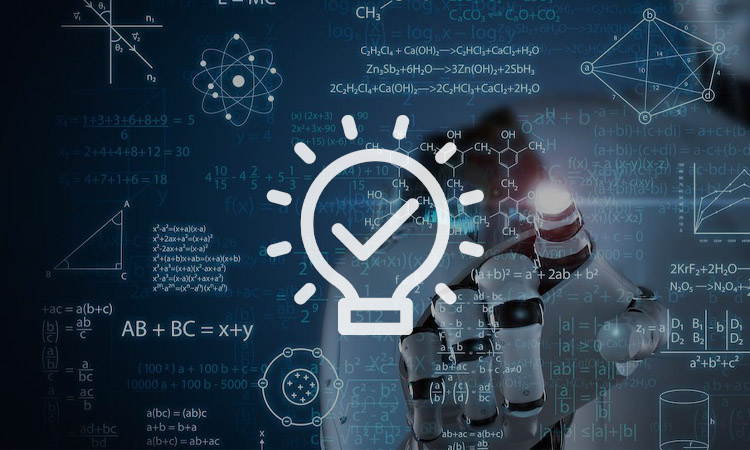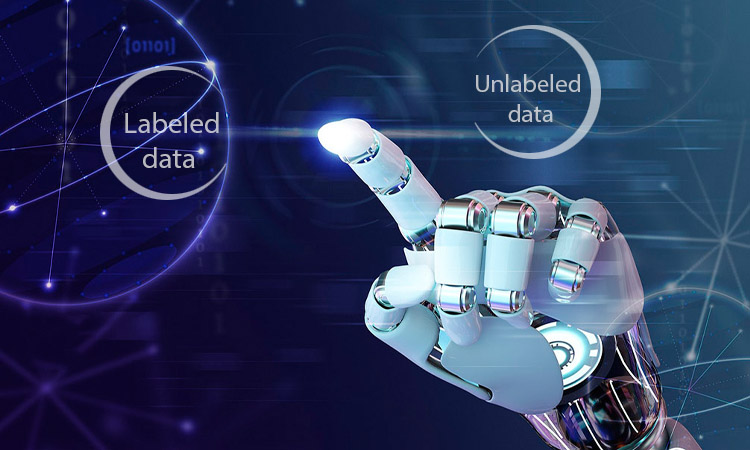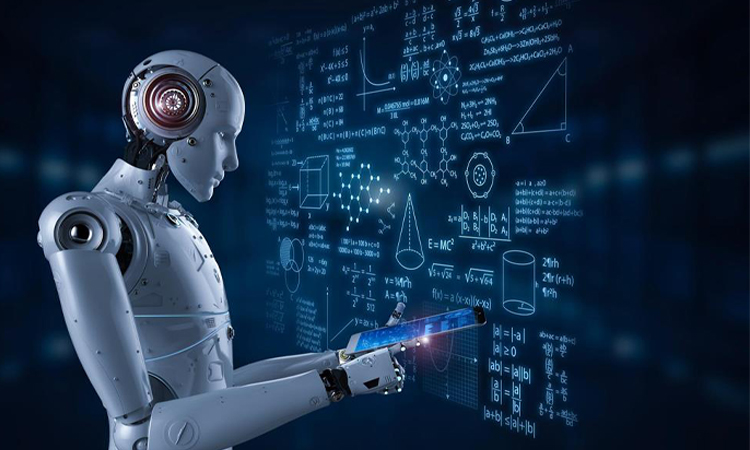The rapid advancements in artificial intelligence (AI) and machine learning have paved the way for a new era of self-learning AI systems. These intelligent algorithms can learn from vast amounts of data, adapt their behavior, and continuously improve their performance. This article explores the potential impact of self-learning AI on various domains and discusses the challenges and opportunities it presents.
The Rise of Self-Learning AI Systems
Self-learning AI refers to intelligent algorithms that can learn from large amounts of data and improve their performance over time. They employ advanced techniques such as neural networks and deep learning to mimic the human brain’s ability to recognize patterns and make decisions. By constantly adapting and refining their models, these systems can achieve remarkable levels of accuracy and efficiency.

Self learning AI does not need to be hard-coded by humans; it will acquire and update knowledge over time. They also add their new features through a learning process based on iterative experimentation. These self-learning systems seek to interact with the user or the surrounding environment. They then learn by observing changes resulting from their activities.
Self learning AI systems are built to meet predetermined goals. The researchers also discovered a fact. These artificial neural network hardware-based systems outperform traditional digital operating systems. They can also be used as software structures to build those logic-based self-learning systems. The logic here includes fuzzy logic, list logic, and loose philosophical logic. As the systems become more adaptive, they sometimes outperform parametric logic.
Self-learning artificial systems are arguably the future of artificial intelligence. It is because, in theory, it can be much faster than supervised learning. Supervised learning usually refers to machines learning from data sets that humans have taken the time and effort to label. This kind of learning makes neural networks often take shortcuts. The labels they learn are usually associated with the least, and sometimes the most superficial, information. Let’s take a simple example of a photo of a cow. There is a high probability that neural networks will use grass when identifying photos of cows. It is because, in their dataset, people usually take pictures of cows in a field.
Alexei Efros, a computer scientist at the University of California, Berkeley, once said something. He believes that most modern AI systems rely too much on labels created by us humans. “They don’t really learn material knowledge.” And the new generation of algorithms is like an undergraduate who misses a whole semester. They study hard before the final exam. “They don’t learn the material, but they end up doing well on the exam.”
The algorithms with “self-learning artificial intelligence” have also proven successful. They were particularly good at simulating human language and at image recognition. Researchers use self-supervised learning AI to build a variety of computational models. These include models of the mammalian visual and auditory systems. Researchers use self-supervised learning AI to build a variety of computational models. These include models of the mammalian visual and auditory systems. They found a phenomenon in the model. Here a correspondence with a supervised learning counterpart closer to brain function is shown. These artificial networks also seem to be telling neuroscientists about some practical ways we can use the brain to learn.
In addition, AI progress can be very slow if it stays in a manually created dataset to learn. therefore, self learning AI is critical in those situations where there is not a lot of available training data. Self learning AI will also transfer newly learned skills to other similar skills when needed.
A typical example of self learning AI is cybersecurity. It is because, under that domain, it can provide a more robust recognition of changes and patterns of violations. This unsupervised learning AI will learn from the changing data environment. As a result, it will also find many anomalies that may need help to detect.
Understanding Self-Learning AI
Self-learning AI systems are designed to process and analyze vast amounts of data, extracting meaningful insights and patterns. Neural networks, a key component of self-learning AI, are inspired by the structure of the human brain. They consist of interconnected nodes, or artificial neurons, that process and transmit information. Through a process called deep learning, these networks can automatically learn hierarchical representations of data, enabling them to make accurate predictions and classifications.
Reinforcement Learning and Autonomous
Decision Making Another crucial aspect of self-learning AI is reinforcement learning. This technique allows AI systems to learn through interaction with an environment, receiving positive or negative feedback based on their actions. By maximizing rewards and minimizing penalties, these systems can autonomously make decisions and improve their performance over time. This ability holds great promise in various domains, from robotics to healthcare and finance.
Self Learning AI Program
Self-learning AI programs, also known as machine learning algorithms, are a subset of artificial intelligence that enables machines to learn and improve their performance without being explicitly programmed. These programs use statistical techniques to identify patterns and make predictions from data inputs. Self-learning AI programs can adapt to new data inputs and learn from them to improve their accuracy and performance over time.
There are several self-learning AI program types , including supervised learning, unsupervised learning, and reinforcement learning. Supervised learning involves training the AI program with labeled data inputs, while unsupervised learning uses unlabeled data inputs to identify patterns and relationships. Reinforcement learning involves an AI program learning through trial and error, receiving feedback on its actions and adjusting its behavior accordingly.
Despite the many benefits of self-learning AI programs, there are concerns about their potential misuse and unintended consequences. Developers must prioritize ethical considerations and ensure that their AI programs are designed with transparency and accountability.
What are the Types of Self Learning AI?
There are two types of machine learning: labeled data and unlabeled data. Labeled data typically refers to those input and output parameters in machine-readable form. Unlabeled data, on the other hand, mostly refers to parameters that contain only one or no machine-readable form. Tagged data requires more human resources than untagged data. But unlabeled data also requires us to provide more sophisticated solutions.

- Supervised Learning
Let’s take the ML algorithm as an example. Researchers have given it a short training dataset that can be used for supervised learning. This training set can be described here as a subset of a larger dataset. It can provide a basic understanding of the problem to be addressed, the solution, and the data point algorithm. As it provides the required labeling parameters for it the algorithm of the problem. Therefore the training dataset and the final dataset have very similar feature representations.
Second, when providing parameters, programs look for connections between each other. It makes it appear that there is a causal relationship between the variables in the dataset. The algorithm explains how the data works and the relationship between input and output at the end of training.
- Unsupervised Learning
The significant advantage of unsupervised machine learning is that it can use that row of unlabeled data. It suggests that it can make the dataset machine-readable without human effort. Self learning AI models also allow the software to work on larger datasets. Algorithms in supervised learning can determine the exact relationship of the link between any two data items. However, due to the lack of reference label processing due to unsupervised learning. It leads to the formation of their hidden structures. But this does not mean that it is intractable. These self-supervised learning AI programs do not need human input of parameters. They perceive the relationship between data points in an abstract way.
- Reinforcement Learning
Reinforcement learning is inspired by everyday life, the process by which humans learn from data. They learn from new environments and use uninterrupted trial and error to improve themselves. Algorithms promote or enhance these favorable results. They block or punish in the face of unfavorable outcomes. Reinforcement learning can be described as a teleological concept based on conditioned reflexes. They put the algorithm in an environment with an interpreter and a reward system to work without interruption. The interpreter receives the results from the output and evaluates them for pros and cons.
Most modern AI still relies on supervised learning. Even the most knowledgeable AI agents will appear to need more ability to apply common sense reasoning. For example, if we ask, “How long would it take for a human to swim to the moon?” It may tell us How far apart the Earth is from the Moon or “I don’t know.” And, we all know – we can’t swim to the moon.
What are the Benefits of Self Learning for Real-Time Analytics?
Organizations can analyze data points and gain insights as soon as they enter the system. They both rely on real-time analytics. Real-time analytics results allow us to take immediate action. This is especially important for more urgent situations.

Real-time analysis is very powerful under ideal conditions. It will help us solve problems and make decisions in seconds. They are quite responsive and usually quickly process a large amount of data. If the real-time analysis is lost, we may not be able to react or directly lose part of the data when absorbing a large amount of data. Real-time analytics allows us to work quickly and respond quickly to our customers’ needs. They also allow us to avoid some problems or downgrade risks in advance.
Self-learning AI models enable machines to grasp supervised signals from the information itself. They will find and solve problems even if they learn without human help. This all relies on real-time analytics.
Self-learning AI has another significant advantage – it generates significantly larger data. This is also particularly important for real-time analytics.
Self-Learning AI in Healthcare
Self-learning AI has the potential to support healthcare professionals in various aspects of medical diagnosis and treatment. By analyzing extensive medical data and identifying patterns, self-learning AI systems can provide valuable insights that aid in the diagnostic process. This can lead to more accurate and timely diagnoses, enabling healthcare professionals to develop personalized treatment plans for patients.
Additionally, self-learning AI can enhance patient care and monitoring by continuously analyzing patient data and providing real-time insights. This can help healthcare professionals detect anomalies, identify potential risks, and make informed patient management and treatment decisions. The continuous learning capability of self-learning AI allows for ongoing improvements in its performance, leading to enhanced accuracy and efficiency over time.
However, it is important to note that the integration of self-learning AI in healthcare is not intended to replace healthcare professionals. Rather, it is designed to augment their expertise and support decision-making processes. The collaboration between AI systems and healthcare professionals can lead to more effective and efficient healthcare delivery.
Self-Learning AI in Autonomous
Self-learning AI is driving advancements in autonomous vehicles, significantly improving transportation and safety. By leveraging real-time sensing and decision-making capabilities; AI systems can analyze complex traffic scenarios, detect obstacles, and make split-second decisions to ensure passenger safety. These self-learning AI algorithms continuously learn from their experiences on the road, enabling them to adapt and improve their driving performance over time. The integration of self-learning AI in autonomous vehicles holds the potential to reduce accidents, enhance traffic flow, and improve overall transportation efficiency. However, the widespread adoption of autonomous vehicles also raises concerns regarding trust and liability. Determining responsibility in the event of an accident involving an autonomous vehicle becomes more complex when AI systems are involved.
Self-Learning AI in Finance and Banking
In the finance and banking sector, self-learning AI has the potential to transform fraud detection and risk management. AI algorithms can analyze large volumes of financial data, identify patterns indicative of fraudulent activities, and alert authorities in real time. These systems can also provide personalized financial recommendations, helping individuals make informed decisions about investments, savings, and financial planning.
However, using self-learning AI in finance and banking raises concerns regarding security and privacy. Protecting sensitive financial information from cyber threats and ensuring data privacy are critical considerations in implementing AI systems. Striking the right balance between security measures and the convenience and efficiency self-learning AI offers is a key challenge in this domain.
Ethical Considerations in Self-Learning AI
Development As self-learning AI becomes more pervasive, ethical considerations play a crucial role in its development and deployment. One major concern is the presence of bias and fairness in AI algorithms. If the training data used to train AI systems contains biases, these biases can be perpetuated, leading to unfair outcomes. To mitigate these issues, AI algorithms must be developed with diversity, inclusivity, and fairness in mind.
Transparency and explainability are also important ethical considerations. AI systems that can provide clear explanations for their decisions and actions can build trust and facilitate human-AI collaboration. Developing techniques to interpret and understand the decision-making processes of self-learning AI algorithms is an ongoing area of research.
Ensuring accountability and responsibility is another critical aspect. As AI systems become more autonomous and self-learning, it becomes crucial to establish mechanisms to hold developers, organizations, and AI systems themselves accountable for their actions. This includes developing regulatory frameworks, standards, and guidelines for the ethical development and use of self-learning AI.
Conclusion
The emergence of self-learning AI systems is ushering in a new era of technological advancement. From healthcare to autonomous vehicles, finance, and cybersecurity, self-learning AI holds immense potential. However, it also poses ethical challenges that must be carefully addressed to ensure AI’s responsible and beneficial integration into society. By addressing these challenges and leveraging the power of self-learning AI, we can pave the way for a future where intelligent systems collaborate with humans, enhance decision-making, and create new possibilities in the “self-era.”
Related Articles: What is Autonomous AI?
Some Common AI key Terms
- Artificial Intelligence: It is a system that simulates human intelligence execution and decision-making. Typical tasks include speech recognition, language translation, visual perception, etc.
- Artificial Neural Network (ANN): It acts like a human brain to help us solve difficult tasks with traditional computer systems. It will change according to the data of our input and output.
- Self-learning: It can be simply defined as a recognition model. It swims and learns from the ocean of data. It also gains more capabilities over time.
- Supervised Learning: It is a machine learning model that learns by comparing the output with the “correct” output data. If the system is incorrect, it will help us adjust the algorithm accordingly.
- Unsupervised Learning: It uses input data that is not classified and labeled to learn through iterative trials.
- Machine Learning: This is another aspect of artificial intelligence that focuses on algorithms. It enables machines to achieve autonomous learning without human programming or training. It also automatically learns from experience and further improves updates.
- Deep Learning: It belongs to the more complex machine learning methods by nature. It stacks neural networks together to make them more accurate than previous algorithms.
- Convolutional Neural Network (CNN): It is a neural network that helps us to recognize and understand images. It is often used for the analysis of visual images.
- Data Science: It is an interdisciplinary field technical approach that combines many disciplines. These include statistics, information science, and computer science. It takes an empirical perspective to analyze and interpret data from these scientific projects.
- Advanced Analytics: It has those data analysis and prediction methods that go beyond traditional business intelligence. Often people use advanced analytics to perform simulations of potential business scenarios and outcomes.
FAQs
Q: What is self-learning AI?
A: Self-learning AI refers to artificial intelligence systems that can learn from data, adapt their behavior, and improve their performance over time without explicit programming.
Q: How does self-learning AI work?
A: Self-learning AI utilizes techniques such as neural networks and reinforcement learning. Neural networks mimic the structure of the human brain to recognize patterns and make decisions. At the same time, reinforcement learning enables AI systems to learn through interaction with an environment and receive feedback to improve their decision-making.
Q: What are the benefits of self-learning AI?
A: Self-learning AI offers numerous benefits, including improved accuracy and efficiency in tasks such as diagnostics, decision-making, fraud detection, and risk management. It has the potential to revolutionize various domains, enhance safety, and provide personalized experiences.
Q: What are the potential risks and challenges of self-learning AI?
A: Some risks and challenges associated with self-learning AI include bias and fairness issues in algorithms, privacy concerns regarding the use of sensitive data, accountability and liability in autonomous systems, and the need for transparency and explainability in AI decision-making.
Q: How can ethical concerns be addressed in self-learning AI systems?
A: Ethical concerns in self-learning AI can be addressed by developing diverse and inclusive training datasets, ensuring fairness in algorithmic decision-making, promoting transparency and explainability of AI systems, and establishing frameworks for accountability and responsibility in AI development and deployment.







